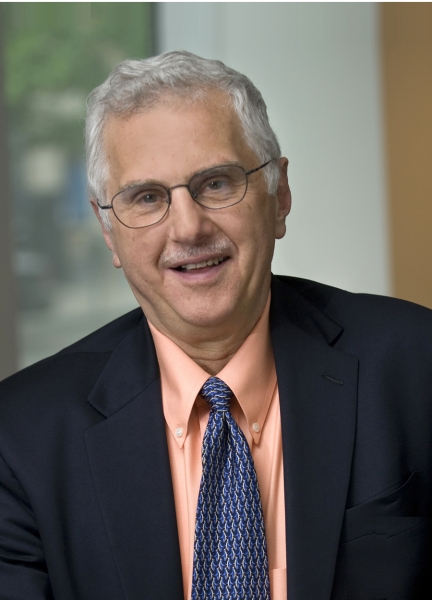My introduction to cell biology came when, as an assistant professor of chemistry at Princeton University in the early 1970s, I bought a copy of a small textbook. The entire subject seemed completely foreign and uninteresting to me then, with its focus on light and electron micrographs of cell components, and on strange new words such as Golgi apparatus and endoplasmic reticulum. (Now, perversely, all 7th graders in California are expected to memorize these two words!)
This would soon change. Early in 1978, I received a fateful telephone call from Jim Watson. Jim had the insight to suggest that the time was ripe to consolidate what was then known about chemistry, molecular biology, genetics, and cell biology to produce a large new textbook to be entitled the Molecular Biology of the Cell. Multiple authors would be needed. The author initially responsible for the chemistry and molecular genetics sections of this new textbook had just dropped out. All of the work would be completed over the course of the next two summers. Would I be willing to take his place?
Bruce Alberts
In the end, the actual time required by the authors to write Jim's new textbook had been underestimated by about a factor of five. Each of the authors would spend more than 365 12-hour days together at “book meetings” to produce its first edition, published in 1983. But we each learned a tremendous amount about the science of the cell. In addition to chapters on biochemistry and the cell nucleus, I was assigned to write the chapter on intracellular membranes, in which the sorting of proteins through the endoplasmic reticulum and Golgi apparatus was to be explained in molecular terms. I was mentored in this role by George Palade (a founder of the ASCB and in 1976 its president), who graciously read each of my drafts, thereby sparing everyone else from my naive speculations.
The six authors of Molecular Biology of the Cell are now beginning its 6th edition. Being forced to prepare an overview of our field every five years provides a unique opportunity to detect the changes in how scientists think about cells and to identify new frontiers for young scientists. Thus, for example, for a long time we believed that the only way to concentrate the proteins responsible for a particular set of reactions in a defined space, thereby speeding up those reaction rates, was to form a special membrane-bound compartment that concentrates those proteins. Only when writing the 5th edition of the book (Alberts et al., 2007) did we come to recognize that cells make wide use of large scaffold proteins for the same purpose and that cell chemistry is dominated by many different subcompartments that are not membrane-enclosed. Reconstructing scaffold-based subcompartments in vitro using purified components, so as to decipher their biochemistry, provides a new path of discovery for cell biologists.
Likewise, the elaborate networks of signaling pathways inside the cell—with large numbers of feed-back and feed-forward loops—allow each cell in a multicellular organism like ourselves to make critical decisions on how to behave. Learning how to manipulate this process of cell “thinking”—and repair it when it goes wrong as in cancer—presents another fantastic challenge to young scientists.
Cell biology has come a very long way since my early days as a scientist. It seems very safe to predict that the more we learn about cells and organisms, the more intriguing will be the new mysteries that remain to be solved. Our view of the cell today is certain to seem incredibly simplistic to anyone rereading these brief essays on the 100th anniversary of ASCB, in 2060. To me, there is nothing more grand about science than this, its “endless frontier.”
REFERENCE
- Alberts B., Johnson A., Lewis J., Raff M., Roberts K., Walter P. Molecular Biology of the Cell. 5th ed. New York: Garland Science; 2007. [Google Scholar]



